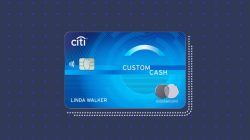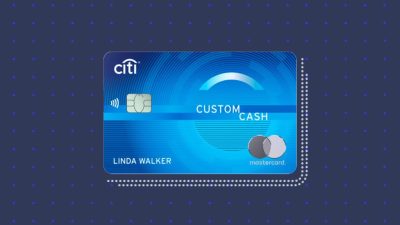
With the ever-growing world of cryptocurrencies, choosing the right app can seem a bit overwhelming. There are countless options out there, each claiming to be the best, but what really matters is finding one that suits your personal needs. Whether you’re a seasoned trader or just starting to explore the crypto world, understanding the features and benefits of each app can help you make an informed decision.
1. Understanding Your Needs
When it comes to choosing the best crypto app, the first step is to understand what you need from the app. Cryptocurrency enthusiasts come from all walks of life, and their requirements can vary widely. For casual traders just dipping their toes into the crypto waters, a simple and user-friendly interface is paramount. Look for an app that provides educational resources and a straightforward onboarding process. On the flip side, seasoned traders might prioritize advanced trading features, such as margin trading and in-depth analytics.
Security is another major consideration. You want to feel safe when you’re buying, selling, or storing your cryptocurrencies. Opt for apps that offer two-factor authentication and cold storage options for your assets. User reviews and expert recommendations can be incredibly helpful in determining how well an app secures its users’ assets. Additionally, make sure the app supports your preferred cryptocurrencies, as not all apps cater to the same digital currencies.
Also consider the long-term robustness of the app. Some platforms might offer great user experiences now but could lack the support or updates necessary to stay relevant in this fast-evolving market. Research the app’s development history. Has it responded well to user feedback? Are there regular updates? This knowledge will help you ensure your chosen app evolves alongside the market trends, making your investment decisions easier in the long run.
2. User Experience and Interface
The user experience and interface of a crypto app can make or break your trading journey. You could have access to the best features available, but if you struggle to navigate the app, it can become frustrating and lead to costly mistakes. Hence, a sleek, intuitive design is essential. A good crypto app should offer seamless navigation, quick access to trade functionalities, and clear visuals that help beginners make informed decisions without feeling overwhelmed.
Take the time to evaluate how easy it is to view charts and indicators. A well-designed app presents this information in a way that allows for quick analyses, enabling users to make timely trades. If you have to dig through layers of menus just to see your portfolio balance, it can detract from the overall experience. Pay attention to how transactions are executed – Are they quick? Do they feature clear confirmation steps? An efficient experience also includes fast performance; the last thing you want is to have an app lag during a crucial market movement.
Moreover, keep an eye out for customization options. People have different trading strategies, and an app that allows you to personalize your dashboard can help you focus on what matters most to you. Look for options to set up alerts for price changes or a customizable watchlist for tracking specific cryptocurrencies. Investing a bit of time to find an app with a good user interface can pay dividends when you’re trading on the go or managing your portfolio.
3. Security Features
One of the most critical aspects when choosing the best crypto app is security. Given the turbulent landscape of cryptocurrency, ensuring the safety of your digital assets should be your top priority. Look for apps that offer robust security features. A good starting point is two-factor authentication (2FA), which provides an extra layer of protection beyond just your password. This means that even if someone manages to get your password, they can’t access your account without the second form of identification.
Additionally, consider whether the app uses cold storage for users’ funds. Cold storage involves keeping the bulk of the cryptocurrency assets offline, significantly reducing the risk of hacks. Trustworthy apps often disclose where and how they store users’ assets, and it’s worth doing some research to see what experts say about their security measures.
Another great security feature to look for is insurance against breaches. Some top-tier crypto apps offer insurance for users, providing peace of mind that your funds are safeguarded against potential losses resulting from unforeseen cyberattacks. Furthermore, inquire about the app’s policy on user data protection. In a world where data breaches are all too common, you want an app that values your privacy and keeps your personal information secure. Reading up on their privacy policies can offer insights into how seriously they take this aspect of their service.
4. Fees and Transaction Costs
Understanding the fee structure of a crypto app is essential for effective trading. Different platforms operate with varying fee models, so it’s important to have a clear picture of how much you’ll be paying for trades, deposits, and withdrawals. While some apps might advertise zero trading fees, they might compensate by increasing the spread (the difference between buying and selling prices), which can ultimately set you back when you make trades.
Moreover, be aware of the deposit and withdrawal fees that might be involved. Some apps charge fees for transferring your money from one location to another, and these can add up over time, particularly if you’re using frequent transactions. Always read the fine print, as transaction costs can significantly impact your overall profitability.
Also, consider whether the app supports various payment methods. Platforms that allow a wide range of options like credit cards, bank transfers, or even PayPal can add to the convenience of your trading experience. In addition, be on the lookout for any hidden fees, such as conversion fees for exchanging fiat currency for cryptocurrencies. Lastly, take the time to compare the total cost of using several apps, as it can help you identify which offers the best value for your trading strategy.
5. Supported Cryptocurrencies
The variety of supported cryptocurrencies is an important factor in determining the best crypto app for your needs. Not every app allows you to trade the entire spectrum of available cryptocurrencies, and you may find yourself constrained by a limited selection. If you have a specific cryptocurrency in mind or plan on diversifying your portfolio, ensure the app supports a wide range of options beyond just Bitcoin and Ethereum.
Moreover, emerging altcoins often present lucrative opportunities, and an app that continually updates its offerings can be a game-changer. Keeping an eye on the app’s history of adding new cryptocurrencies can also give insights into how engaged they are with the evolving landscape of digital coins.
Additionally, it helps to look for apps that feature direct trading pairs. The ability to trade one cryptocurrency for another without needing to exchange it for fiat money first can save you time and reduce fees. A well-rounded app can also provide tools to analyze less common cryptocurrencies, helping you make educated trading decisions. Understanding and evaluating the support for various cryptocurrencies within an app can assist you in making more strategic investment choices as you navigate the dynamic world of crypto.
Comparative Analysis of the Best Crypto Apps
1. User Experience and Interface
When choosing the best crypto app, one of the most critical factors to consider is the user experience and interface. A clean, intuitive design can make a significant difference in how easily you navigate through the app. For beginners, an app that presents information clearly without overwhelming jargon is vital. Many apps offer a user-friendly interface that makes it simple to buy, sell, and track your crypto investments. Those who are new to the crypto world will benefit from tutorials and customer support that guide them through the fundamental processes. On the other hand, experienced traders may prefer apps packed with charts, analytics, and customizable dashboards. Major personalities in the crypto world often highlight the importance of seamless navigation, as your trading decisions can be significantly influenced by how quickly and effectively you can find relevant information. Here’s a comparative overview of user experiences across some popular crypto apps:
| Crypto App | User Experience Rating | Notable Features |
|---|---|---|
| Coinbase | 9/10 | Beginner-friendly interface, educational resources |
| Binance | 8/10 | Advanced trading features, customizable interface |
| Kraken | 8.5/10 | Robust security measures, comprehensive tutorials |
2. Security Features You Can Trust
Security is a paramount concern in the cryptocurrency space, making it a vital aspect to examine when determining which crypto app is best. Given how many stories constantly emerge regarding hacks and breaches, checking the security features an app offers is crucial. Leading apps incorporate advanced technology to protect users’ assets, such as two-factor authentication (2FA), biometric login, and end-to-end encryption. Moreover, the best apps often indicate where they keep your funds – whether in cold storage (offline) or hot wallets (online). Regular audits and transparency regarding security updates can also signify an app’s commitment to safeguarding user information. Additionally, liquidity and insurer options can provide an extra layer of safety for traders who prefer to mitigate potential losses.
3. Range of Supported Cryptocurrencies
Not all crypto apps are created equal when it comes to the variety of cryptocurrencies they support. Depending on your investment strategy, having access to multiple coins can be advantageous. For instance, while some apps primarily support popular currencies like Bitcoin or Ethereum, others take a more extensive approach, offering a catalog of various altcoins to choose from. If you’re looking to diversify your portfolio or are interested in emerging cryptocurrencies, opting for an app with a broader selection can prove beneficial. Apps like Binance and Kraken furnish users with a plethora of altcoins and token offerings, while others may focus on just a handful of the most well-known currencies. This section will help you find an app that aligns best with your investment preferences.
4. Fees and Transaction Costs
The cost of trading varies significantly across different crypto apps, which makes understanding fees an important part of the selection process. There are generally two types of fees to consider: trading fees and withdrawal fees. Trading fees can be a flat rate or percentage-based, impacting how much you pay when you buy or sell cryptocurrencies. Additionally, some apps may have hidden fees in their spreads (the difference between buy and sell prices). Meanwhile, withdrawal fees can also vary; some platforms may charge when you move your assets off their platform, while others may not. It’s crucial to read the fine print regarding fees to prevent unexpected costs. Below is a comparative table illustrating the fees of some top crypto apps:
| Crypto App | Trading Fee | Withdrawal Fee |
|---|---|---|
| Coinbase | 1.49% | $0.99 to $2.99+ |
| Binance | 0.1% | 0.0005 BTC |
| Kraken | 0.26% (taker) | 0.0005 BTC |
5. Customer Support and Resources
Having efficient customer support can significantly enhance your experience with a crypto app. Crypto investing can be complicated, and users often encounter issues ranging from login problems to transaction inquiries. The best crypto apps offer varied support channels, whether through live chat, email, or comprehensive help centers. In addition to direct support, many apps supply educational resources, such as tutorials and market analyses, to help users grow their knowledge and investing skills. Some platforms even provide market insights or integration with community forums where users can share experiences and strategies. Be sure to look for apps that invest in customer service and educational materials.
Frequently Asked Questions
1. What features should I look for in a crypto app?
Look for user-friendly interfaces, security features, supported currencies, fees, and customer support options.
2. Is security guaranteed in crypto apps?
No, while many apps have high-security standards, it’s crucial to do your due diligence; never invest more than you can afford to lose.
3. Are transaction fees the same for all crypto apps?
No, transaction fees can vary widely among different platforms based on their pricing structures.
4. Do I need to verify my identity to use a crypto app?
Yes, most reputable crypto apps require identity verification to comply with regulations.
5. Can I trade cryptocurrencies 24/7?
Yes, unlike traditional stock markets, cryptocurrency trading occurs continuously, 24/7.
6. What is a hot wallet, and how does it differ from a cold wallet?
A hot wallet is connected to the internet and is easier to access, while a cold wallet stores assets offline for improved security.
7. Should I diversify my crypto portfolio?
Diversification can help mitigate risks; investing in multiple cryptocurrencies can balance potential losses.
8. Are all cryptocurrencies supported on any crypto app?
No, the available cryptocurrencies differ from app to app; always check before choosing.
9. How can I make the most noise in crypto investments?
Stay informed, understand trends, and manage risks actively. Educate yourself on crypto market dynamics.
10. Are crypto apps available globally?
Many crypto apps are available internationally, but some restrictions may apply depending on local laws.
11. What happens if I forget my crypto app password?
Most apps offer a password recovery option; ensure you have secure recovery information.
12. Can I set alerts for cryptocurrency prices?
Yes, many apps have built-in alert features to notify you when prices reach specific thresholds.
13. Is it safe to store cryptocurrencies in an app?
It depends on the app’s security measures; consider using a hardware wallet for storing larger amounts.
14. Can I trade cryptocurrencies for traditional currencies?
Yes, most crypto apps allow you to convert cryptocurrencies to fiat currencies like USD or EUR.
15. Are trading tools available for beginners?
Many crypto apps offer beginner-friendly tools, including guides and simple trading options.
Wrapping It Up!
Thanks for hanging out with us and exploring the ins and outs of the best crypto apps! We hope you found the information helpful and that it guides you in making your crypto decisions a little easier. Remember, there’s plenty to learn in the crypto world, so don’t hesitate to drop by again for more insights. Until next time, happy investing and take care!









